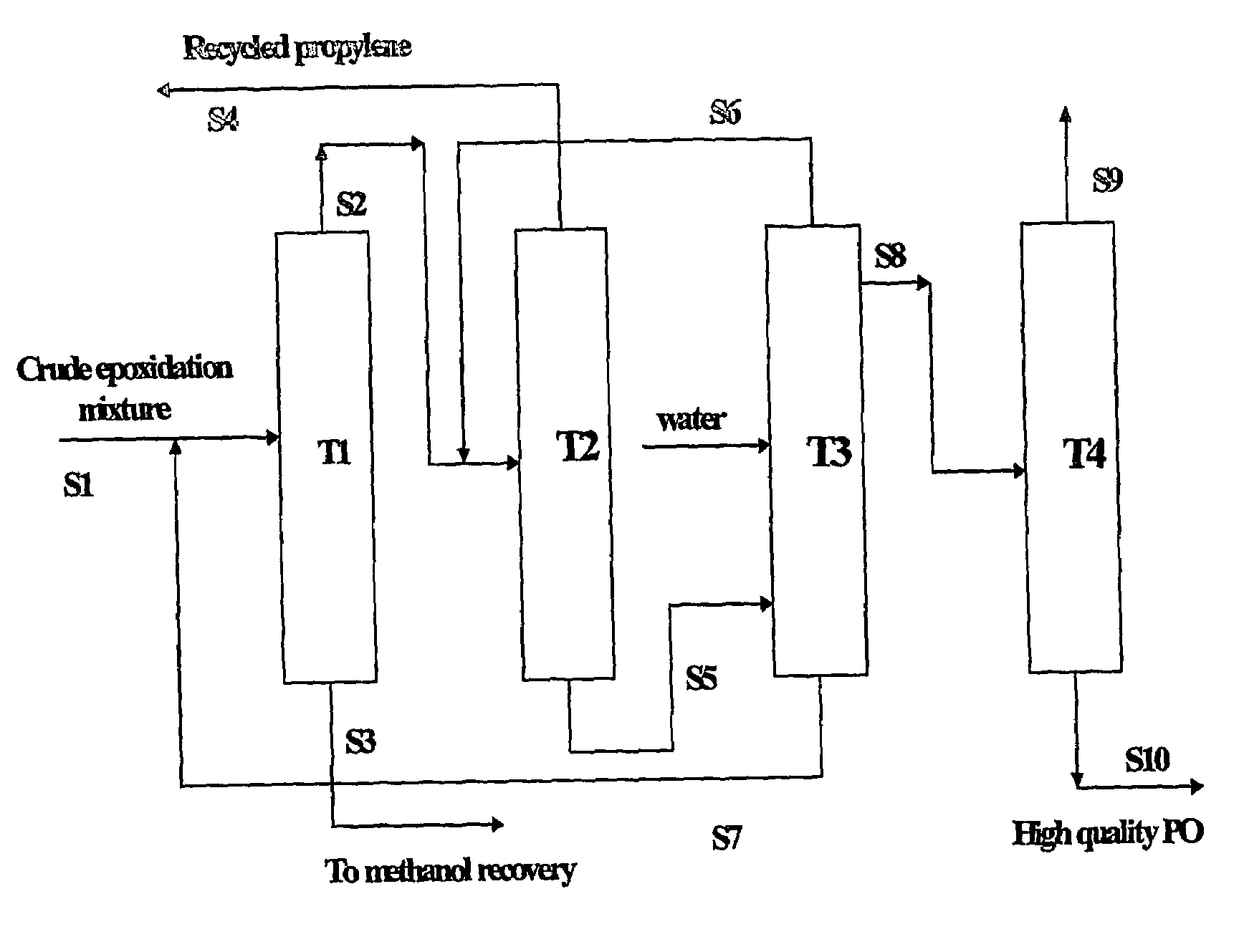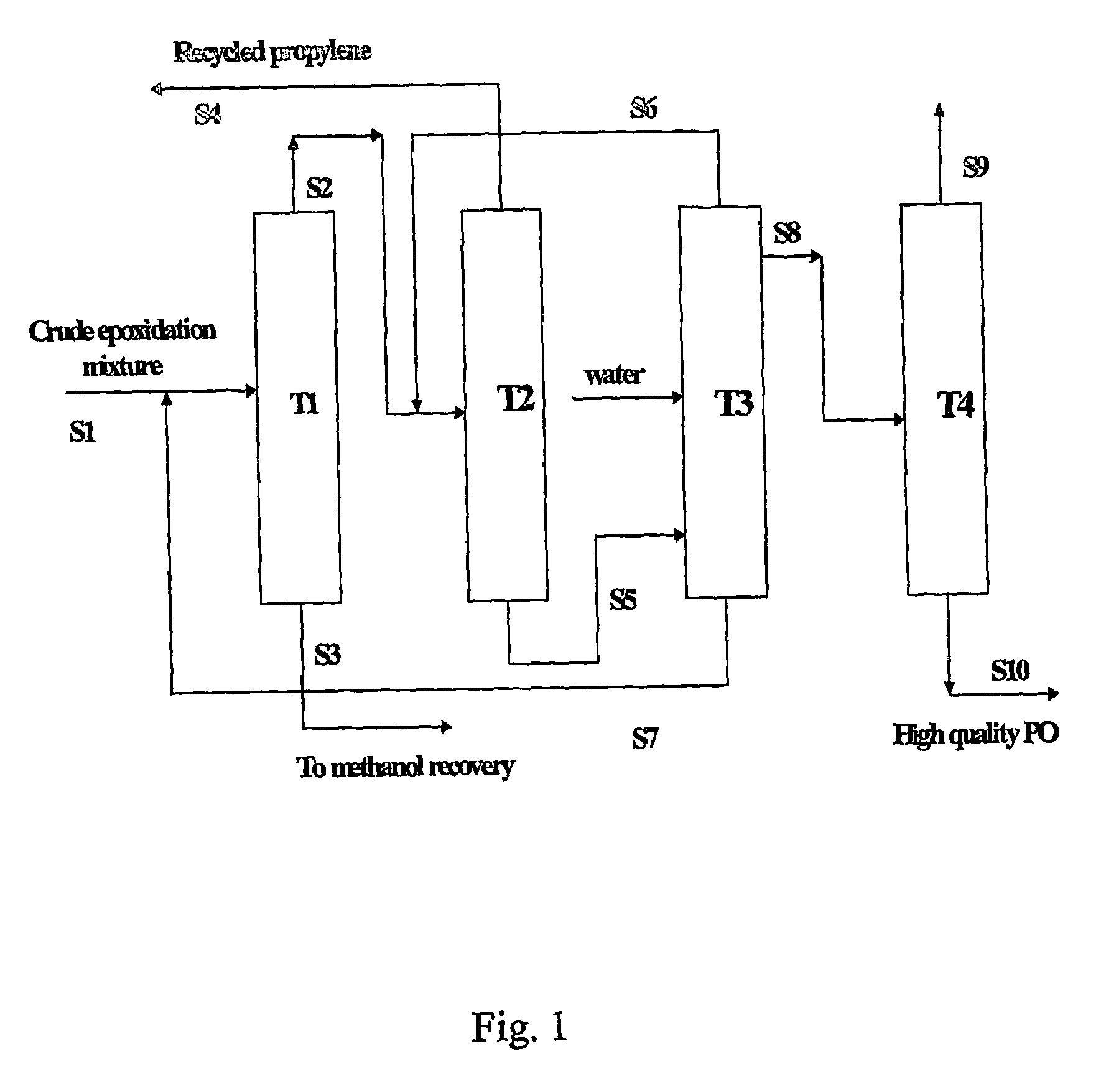Purification of propylene oxide resulting from epoxidation of propylene with hydrogen peroxide
a technology of propylene oxide and hydrogen peroxide, which is applied in the field of recovery of propylene oxide, can solve the problems of affecting the concentration of methanol in the purified propylene oxide remains higher than acceptable for most applications, and the reference does not address the yield loss of propylene oxide, etc., to achieve high catalyst activity and selectivity, promote high efficiency, and reduce the effect of methanol removal
- Summary
- Abstract
- Description
- Claims
- Application Information
AI Technical Summary
Benefits of technology
Problems solved by technology
Method used
Image
Examples
example 1
[0087]With reference to FIG. 1, a crude reaction product mixture resulting from the epoxidation of propylene with hydrogen peroxide in methanol solvent in the presence of titanium silicalite catalyst was filtered to remove the catalyst and thereafter fed as stream S1 to distillation tower T1. The crude epoxidation product had the composition shown in Table 1, in percentages by weight:
[0088]
TABLE 1Crude Epoxidation ProductComponentWt %Propylene Oxide5.5Methanol78.1Water9.3Propylene5.3Propane0.8Propylene glycol &0.6glycol ethersAcetaldehyde0.04Other impurities0.36
The operating conditions for tower T1 were as follows: top temperature, 40° C.; top pressure, 2 bar (200 kPa); bottom temperature, 89° C. From tower T1 was obtained a first bottoms fraction, shown as stream S3, containing methanol, water, acetaldehyde, and heavy components, such as glycol and glycol ethers; and a first light fraction as stream S2 containing propylene oxide, unreacted propylene, and the balance of methanol, wa...
PUM
| Property | Measurement | Unit |
|---|---|---|
| temperature | aaaaa | aaaaa |
| temperature | aaaaa | aaaaa |
| temperature | aaaaa | aaaaa |
Abstract
Description
Claims
Application Information
 Login to View More
Login to View More - R&D
- Intellectual Property
- Life Sciences
- Materials
- Tech Scout
- Unparalleled Data Quality
- Higher Quality Content
- 60% Fewer Hallucinations
Browse by: Latest US Patents, China's latest patents, Technical Efficacy Thesaurus, Application Domain, Technology Topic, Popular Technical Reports.
© 2025 PatSnap. All rights reserved.Legal|Privacy policy|Modern Slavery Act Transparency Statement|Sitemap|About US| Contact US: help@patsnap.com


